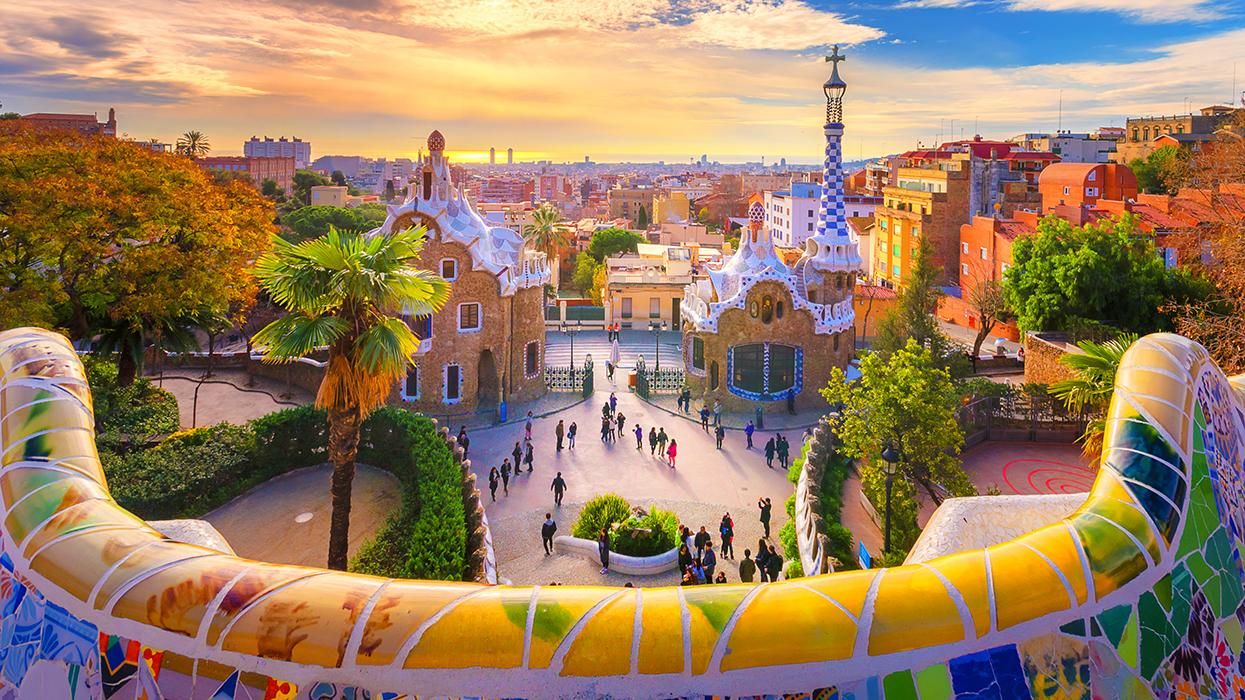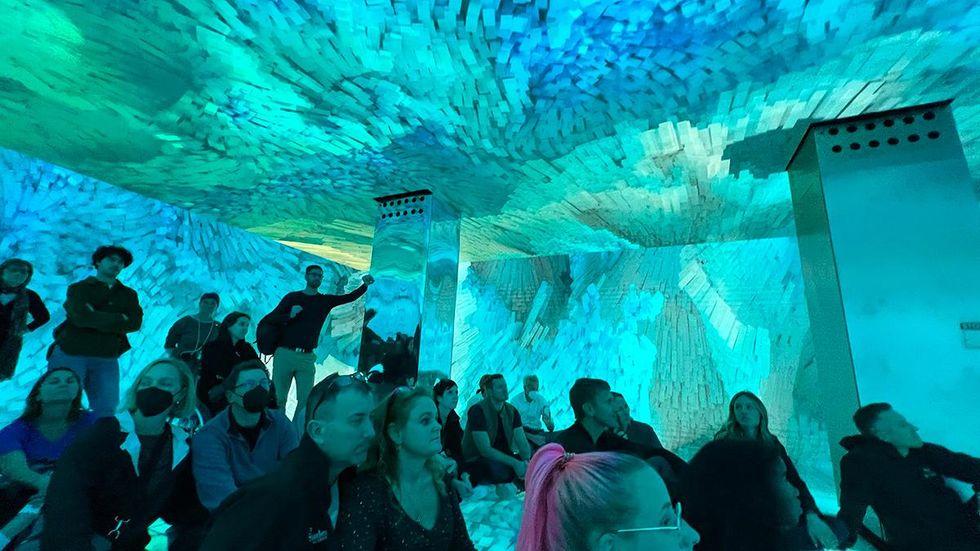
GEORGIOS TSICHLIS/SHUTTERSTOCK
The city is filled with easily accessible masterpieces from the visionary architect.
January 20 2023 5:00 AM EST
By continuing to use our site, you agree to our Privacy Policy and Terms of Use.

The city is filled with easily accessible masterpieces from the visionary architect.
Few cities inspire me quite the way that Barcelona does. Something about the city’s energy, food, people, and its lovely Mediterranean setting seems to nourish the soul. It’s a perfect city to explore on foot, with so much variety of architecture at every turn. And you can’t travel far in this Catalan diamond without encountering the mesmerizing and enchanting architectural work of Antoni Gaudí, one of the city’s favorite sons.

Sagrada Familia
TTSTUDIO/SHUTTERSTOCK
Gaudí, an architect who tragically died in 1926 after being hit by a tram car, is perhaps most well-known for his monumental work, the church of the Sagrada Familia; today it is one of Barcelona’s main tourist attractions. The church, which is still not completed, is on track to be finished sometime after 2026. (The COVID-19 pandemic helped to push back the completion date and a final timeline has not been decided on as of yet.)
The church was started in 1882 and Gaudí became the chief architect a year later. His concept of the design evokes Gothic architecture and modernism, with continual inspiration from nature. It can appear heavy, light, melting, growing, and often otherworldly — and this masterpiece really has to be seen in person to be appreciated.

Park Güell
GEORGIOS TSICHLIS/SHUTTERSTOCK
While in town this Fall, we stayed at the luxury Majestic Hotel & Spa Barcelona, which is well known for its central location, award-winning cuisine, and exceptional service. The hotel also makes sure that guests are afforded top notch tours in and around the city, and when we expressed an interest in Gaudí’s works, the staff set us up with Joana Wilhelm, a professional guide who conducts custom tours in Barcelona and the surrounding Catalonian countryside. Wilhelm took us beyond the typical Sagrada Familia tour, and showed us the lovely Park Güell, an ambitious housing development that never quite got off the ground in the way that its creator had hoped.The development was the idea of Eusebi Güell. In 1986, he had commissioned Gaudí to build his home, the Palau Güell — and that was the beginning of their professional relationship. In 1900, he gave Gaudí the assignment of designing his visionary Park Güell, then on the outskirts of the city. The park was to be like a country club for the very rich, and was to contain 60 homes, of which only two were ever constructed. Sadly (or fortunately for us!), the wealthy prospective buyers that Güell sought felt the location was simply too far from the central city, and the construction prices were too high, even for them.

A rosary-lined pathway in Park Güell
PAUL J HENEY
Today, the park is open for tours. It is a lovely place to wander on a sunny day, filled with pine trees, Bougainville, and olive trees, giving a very Mediterranean feel throughout. Wilhelm pointed out to us how Gaudí keeps a sense of movement with the stones he uses, and incorporates cactus, plants, and organic objects in the sculptures throughout the park. As his father was an iron worker, Gaudí inherited the skill at a young age, and incorporated it frequently in his designs. She also explained so many little aspects of the park that we may have never discovered otherwise, as well as the history surrounding its construction. Gaudi actually lived in the first home that was built here for a short time. And the large round stones that most people assume are parking bollards are actually rosary beads, added so the local homeowners would be able to say the rosary while walking the grounds.

Park Güell
PAGE LIGHT STUDIOS/SHUTTERSTOCK
Wilhelm started us at the less popular upper entrance, allowing us to move downward through the hilly park and away from the biggest throngs of tourists. The other benefit there is that we finished with perhaps the most stunning area in the park (there are many), the main entrance. This area faces the south and the whole of Barcelona is laid out before you. The Dragon Stairway is a perfect photo spot, with a spectacular fountain running down the middle of the staircase, adorned by a dragon, lizard, and other animals, all created in a brilliantly colored mosaic fashion.

Casa Batlló facade
Paul J Heney
Only a few blocks from the Majestic sit two of Gaudí’s other breathtaking landmarks: La Pedrera and Casa Batlló. Even the street views are wondrous, but both are worth touring inside, too — so the Majestic arranged for another excellent guide, Gonzalo Salaya, who took us through the buildings and added insights on Gaudí’s history as we marveled at the mind-bending design work.

Casa Batlló rear exterior
Paul J Heney
Casa Batlló, a UNESCO World Heritage site, is located right on Barcelona’s iconic Paseo de Gracia boulevard and has an interesting history. First built in 1877 for a prominent local family, it was later purchased by an industrialist, who asked Gaudí to tear it down and build a new structure in the early 1900s. Instead, Gaudí decided to save it. The architect, who always tried to avoid straight lines, rebuilt in and around the existing structure and gave it an entirely new façade. The marine-inspired façade almost evokes dragon scales in some areas, and it is one of Gaudí’s more colorful works.

The Gaudí Experience
Paul J Heney
Visitors can check out a very worthwhile Gaudí experience in the basement, wander through the hallways, and even stand on the rooftop balcony in the building’s rear. The playful chimney structures make for a lovely backdrop against the bright Spanish sky. And the art installation Gaudí Cube by Refik Anadol (also called In the Mind of Gaudí) at the end of the tour is a 360° digital work that’s immersive and powerful — make sure not to miss it.

Casa Batlló roof
Paul J Heney
La Pedrera (also known as Casa Mila), a nearby apartment building designed by Gaudí, is breathtaking from the street, with its undulating façade and peculiar iron balcony railings — no two of which are alike. The building is adorned with fantastically shaped chimneys, similar to Casa Batlló. There are a range of tours offered here that take visitors throughout the building, which is endlessly fascinating (definitely visit the whale attic, which seems like another world from the rest of the building!).

The attic room
Paul J Heney
We opted for the nighttime experience, which concludes with a magical light show on the roof, with video imagery projected on the turrets and chimneys. It was a truly unforgettable display — and a beautiful legacy of a most unique architect.

The author at Park Güell
Paul J Heney